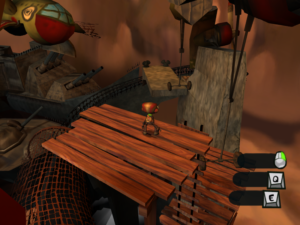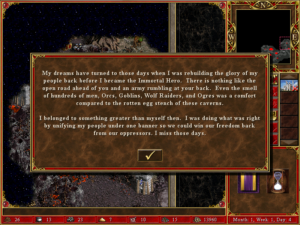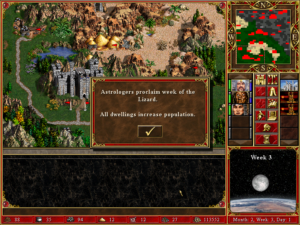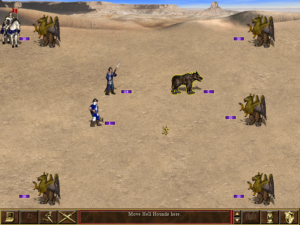Radeon HD 2600 XT
So, I’ve been seeing slow framerates on my machine under multiple games lately: first Myst V, then certain brief bits of Lego Star Wars 2 (which was generally pretty smooth, presumably because its style allows for a pretty simple world model), and now large sections of Psychonauts. Worse, I even had speed problems in Eternal Daughter, a retro sprite-based 2D platformer which I tried when it was featured on Play This Thing. Clearly something had to be done.
The problem is, when games are slow, it’s hard to figure out why. It could be either the CPU or the graphics card, and unless you have multiple machines, it’s impossible to test them individually. So I asked myself: If I bought a replacement for one of these things, and the replacement didn’t speed up these games, which one would I regard as less of a waste? And there was a clear answer to that: the graphics card.
See, my nVidia GeForce 7800 GTX card was giving me problems anyway. The GeForce drivers for Windows XP have a known bug that affects 3D objects displayed on a 2D bitmap background: frequently, random patches of the background will cover up any 3D elements. It’s really a quite striking visual effect, reminiscent of the scenes in Labyrinth and Indiana Jones and the Last Crusade where things that look like background turn out to be foreground, except not done on purpose. I wish I could post a screenshot that captures it, but (a) to get the full effect you really have to see it in motion and (b) to reproduce it I’d have to reinstall the GeForce card. Anyway, it makes several graphic adventures on the Stack unplayable. It’s been a a few years now since I first encountered the problem, and nVidia has issued multiple driver updates, but the problem remains. I’ve contemplated dealing with it by installing Windows 98, which uses different drivers that don’t share the problem, but switching to a non-nVidia card will spare me the trouble.
So, Psychonauts runs perfectly smoothly on my new Radeon, and I confidently expect to start blogging about Myst V soon. The new card has larger numbers associated with it than the old one, but I don’t want to say that that’s the reason for the the performance increase, as the old one was released after most of the games that gave it problems. More likely there was some sort of hardware malfunction. In researching the problem, I saw one person on a support forum who suffered abysmal framerate simply because the graphics card’s cooling fan wasn’t spinning. That wasn’t the case here (I checked), but it could easily be some similar failure.
 Comments(1)
Comments(1)



